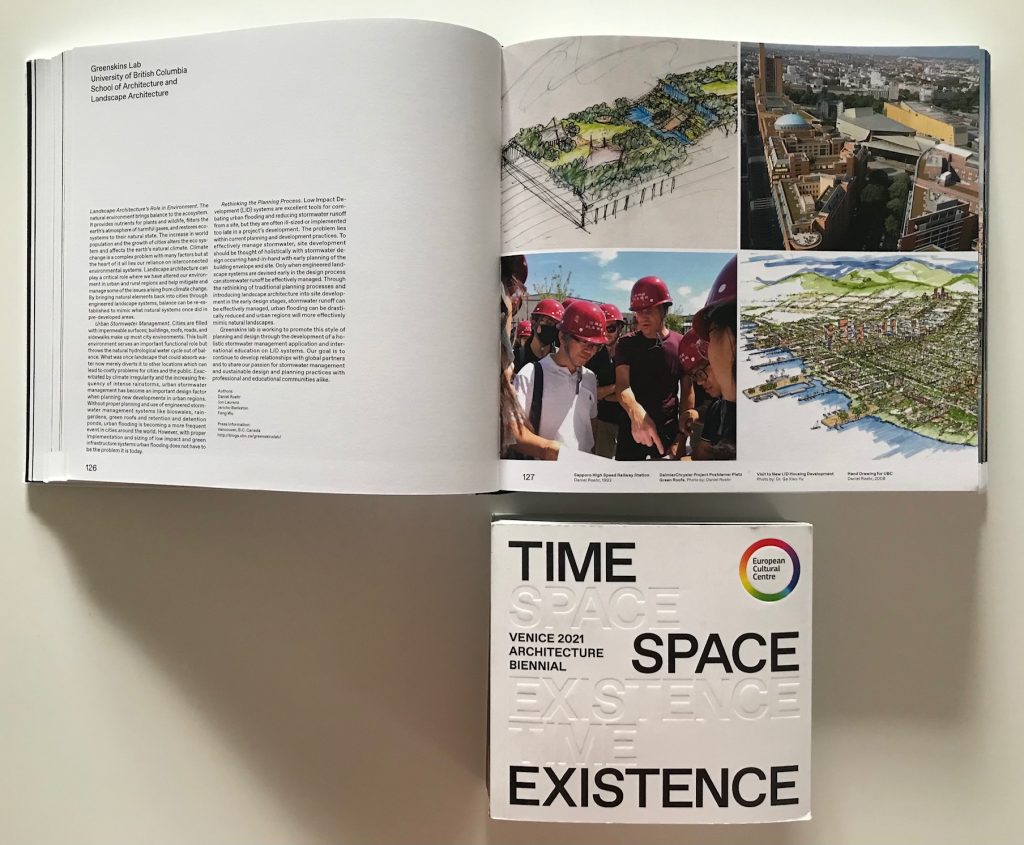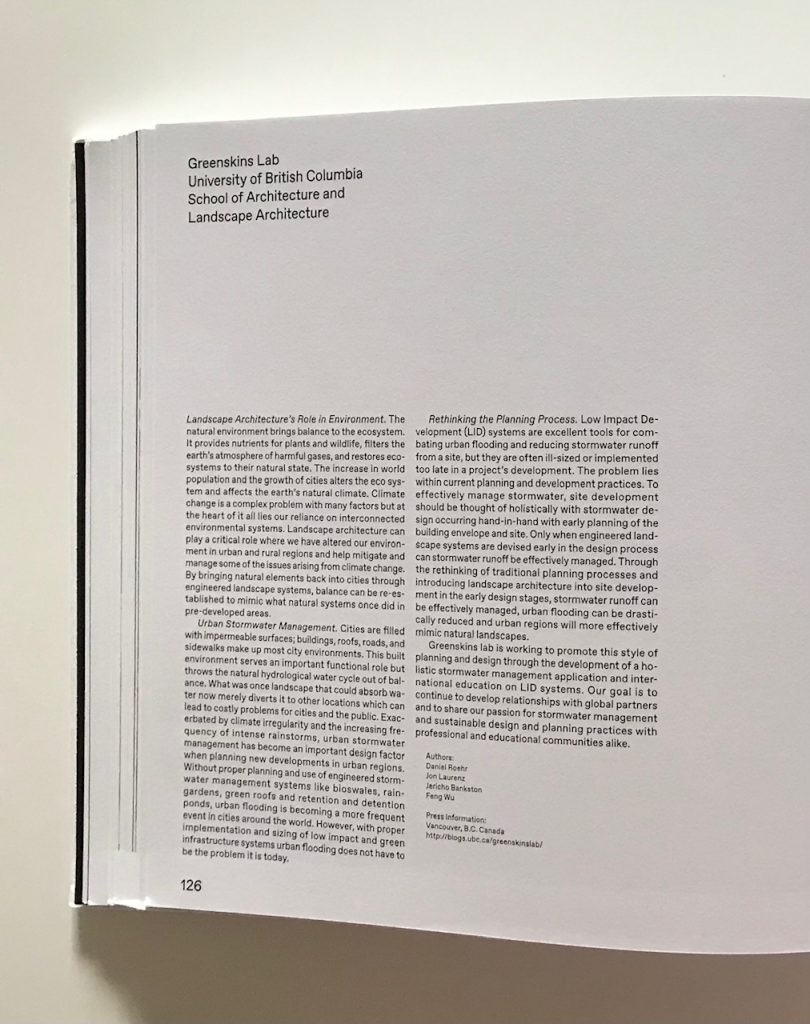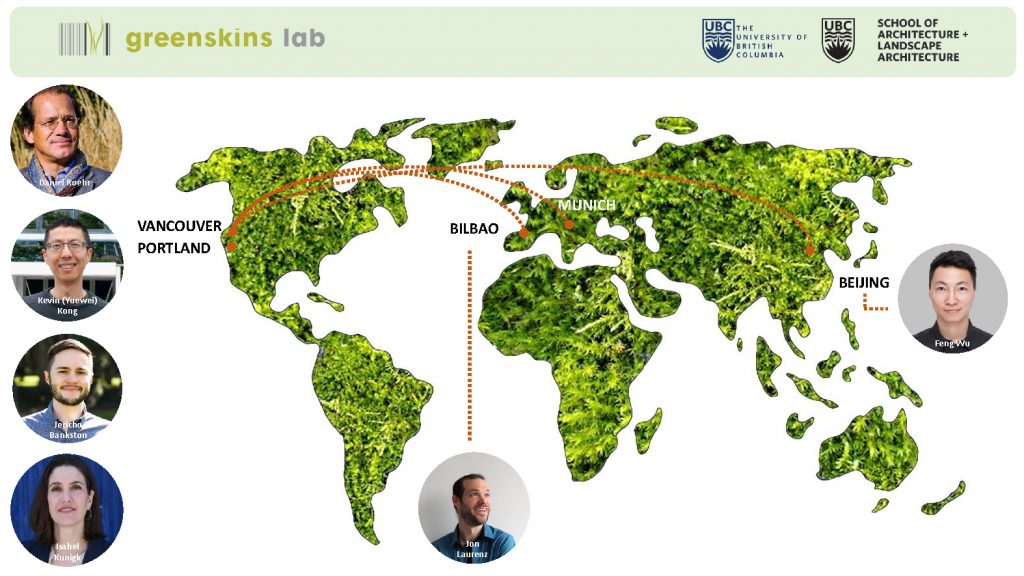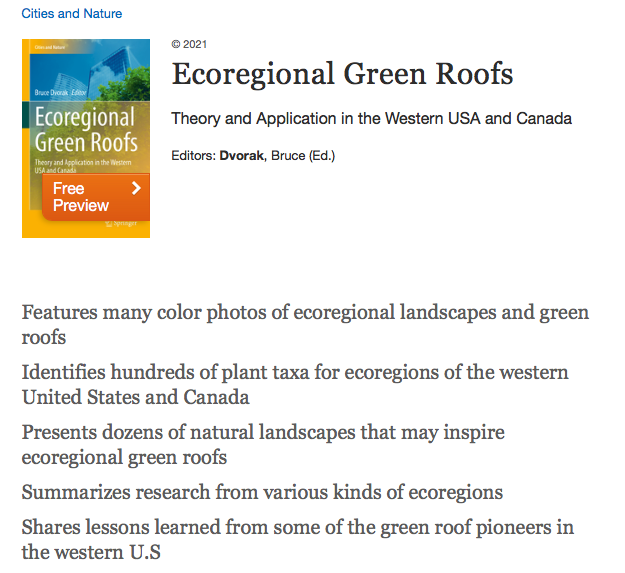


Founded by Professor Daniel Roehr in 2007, greenskins lab is a research group at the University of British Columbia School of Architecture and Landscape Architecture. The lab disseminates information on urban design retrofits and new approaches that improve the ecological functions of public open spaces.


Prof. Daniel Roehr and greenskins lab team Jon Laurenz, Jericho Bankston, Feng Wu, Isabel Kunigk and Kevin Kong have been invited to exhibit at the TIME SPACE EXISTENCE exhibition, an extensive biennial architecture and design exhibition in Venice, Italy, from May 22nd to November 21st, 2021, coinciding with the Venice Architecture Biennale. The event will be held in the historical centre of Venice at Palazzo Mora (lab exhibition location), Palazzo Bembo and the Giardini Marinaressa. In addition, everyone will have the possibility to experience the exhibition online through virtual tours and social media. A virtual exhibition walk through link will be provided to SALA as soon as it is available.
The lab is presenting their ongoing research of a globally usable Low Impact Design (LID) application to dimension LID in the concept phase of urban design projects. It also presents the content of their international LID workshops and lectures and current LID design examples being implemented in Europe through panels and a video created at multiple locations via ZOOM.

Edited by Bruce D Dvorak and co-authored by eight authors including a chapter by Bruce D Dvorak and Daniel Roehr
“Green Roofs in Fraser Lowland and Vancouver Island Ecoregions”
This chapter presents case studies of four conservation sites and seven green roofs located in western British Columbia in the ecoregions of the Fraser Lowlands and Vancouver Island. The region is geographically complex with remnants of forested, savanna, and grassland ecoregions that once populated the Fraser River delta and parts of Vancouver Island. Historically, prairie and savanna vegetation dominated the ground plain on the delta. Less than 25% of the original temperate forests remain intact, and only a few small preserves sustain the endangered native grassland habitats that were once widespread on the southeastern edge of Vancouver Island and the delta. Annual precipitation at Victoria averages about 600 mm, Nanaimo averages about 1000 mm and Vancouver 1190 mm. Much of the precipitation takes place during the fall, winter, and spring, as summers are cool and dry. This chapter highlights how 42 plant taxa native to the region have been trialed on seven ecoregional green roofs.
BOOK INFO
This book studies the application of green roofs in ecoregions of the western United States and Canada. While green roofs were intended to sustain local or regional vegetation, this volume describes how green roofs in their modern form are typically planted with a low-diversity mix of sedums from Europe or Asia. The authors demonstrate how in the western USA and Canada many green roofs have been designed with native plants and have been found to thrive.
Part I of this book covers theory and an overview of ecoregions and their implications for green roofs. In Part II vegetation from prairies, deserts, montane meadows, coastal meadows, and scrub and sub-alpine habitats are explored on seventy-three ecoregional green roofs. Case studies explore design concepts, materials, watering and maintenance, wildlife, plant species, and lessons learned. Part III covers an overview of ecoregional green roofs and a future outlook.
This book is aimed at professionals, designers, researchers, students and educators with an interest in green roofs and the preservation of biodiversity.
Springer Nature
https://www.springer.com/us/book/9783030583941
https://link.springer.com/book/10.1007%2F978-3-030-58395-8
DOI 10.1007/978-3-030-58395-8
eBook ISBN 978-3-030-58395-8
Hard cover ISBN 978-3-030-58395-8

In Summer 2018 Jericho Bankston and Daniel Roehr held a two week workshop to landscape architecture students at Beijing Forest University in China. A publication is now available in Chinese and English.

Jon Laurenz has been fundamental in supporting to establish the lab in 2007 as UBC MASLA student. Since his graduation he has been in Spain practicing as an architect establishing his own firm. He is back in Vancouver from Aug 2020 – Aug 2021 to research in the lab while working on his PhD in Spain. We are so pleased to welcome him back.
A group of Green Roof experts including Daniel Roehr publish an article in THE PROVINCE on “Green Roofs Contributions To Well-Being Of Cities” in June 2020.
Finally, after another year of revising the tool and completely rewriting the paper, we will be handing it in, hopefully mid July 2020, for peer review. The focus of the paper has shifted to the description of the tool and how it functions and can be used.
We are currently digitalizing Daniel Roehr’s drawings from his international practice as landscape architect in Japan, Europe, China and North America. The goal is to provide concept/ideation and design process examples as teaching tool for landscape architecture students to get inspired to continue to use hand drawing in their design concept/ideation phase. It is a fast ideas communication tool and a ‘visual’ international language. The collection will also include recent digital tablet sketches.